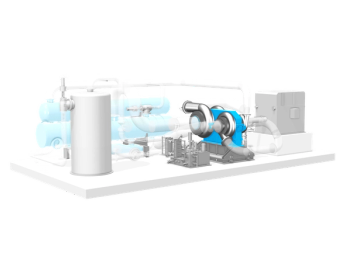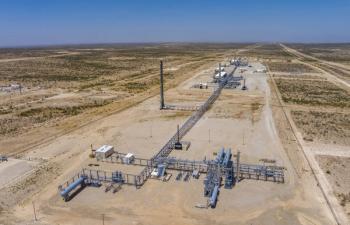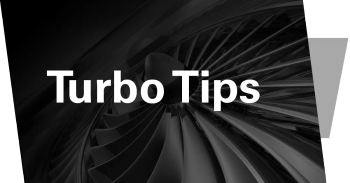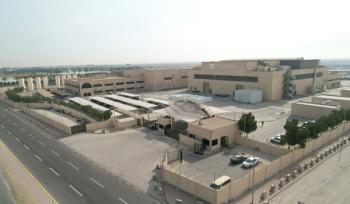
- November/December 2024
- Volume 65
- Issue 7
Turbo Tour: EthosEnergy Showcases Remote Operations, Overhaul, and Field Services
EthosEnergy’s turbine workshop and Performance Center work hand-in-hand to maintain operators’ turbine equipment and provide remote operations and monitoring.
Houston is a hotbed for the oil and gas and global energy industries, employing nearly 250,000 workers across 4,700 firms, rightfully earning its nickname as the “Energy Capital of the World.” It’s here where two of EthosEnergy’s headquarters are located, including its steam and heavy gas turbine repair workshop and its light turbines facility and Performance Center.
In late summer 2024, Turbomachinery International toured one of EthosEnergy’s Texas-based facilities, which employs hundreds of local residents, cementing Houston’s place among top energy-centric locations worldwide.
PERFORMANCE CENTER
The tour began at EthosEnergy’s Performance Center. It was built in 2023 and supports the company’s O&M segment. Performance Center Director Daniel Tegtmeier outlined the facility’s 24/7 real-time remote start/stop capabilities and access to asset monitoring, diagnostics, and remote engineering support. In addition, operators can leverage artificial intelligence (AI) and machine learning (ML) to detect early warnings of reliability and performance issues.
These capabilities are contained within one room, manned by a single operator across multiple monitors and mounted screens for an all-encompassing view of plants and respective assets. This “control room” instantaneously receives data from each plant.
“A protected feed from the customer’s facility comes into our software, and we model what ‘normal’ looks like for each of the machines,” Tegtmeier said. “We monitor the whole plant while some OEMs just monitor the turbine. We look at the heat steam recovery generator, balance-of-plant, any plant configuration—we’re agnostic to the configuration of the facility. If it has a sensor, we can monitor it and learn the normal behavior of that equipment and, when it’s abnormal, we can dig into that issue.”
Aside from remote plant and asset monitoring, the center enables operators to conduct remote operations via computer-aided physical controls—some controlled plants are located over 1,000 miles from Houston. Using remote control, EthosEnergy can dispatch teams to these locations if personnel aren’t present and have full start/ stop capability for every piece of equipment at a given location. The operator analyzes indications from the monitoring system, and then makes informed decisions regarding the stop/start or maintenance required on each machine.
Remote monitoring and control offer numerous benefits over traditional methods. “Economics seems to drive the decision-making behind remotely operating a facility or not,” Tegtmeier said. “However, there’s a huge safety aspect to this because people aren’t around equipment with a lot of energy 24 hours a day. We take several plants and operate them through [the Performance Center] with only one person rather than rotating people around the clock all over the country. Costs add up to continuously staff a facility when the unit is barely running.”
AI and ML are the core enablers of the Performance Center capabilities, allowing the operator to control the plant based on well-informed patterns and learned algorithms. These advanced diagnostics trigger an alert to the Performance Center every time a valve opens or a certain load parameter is reached.
“It’s 100% ML and AI,” Tegtmeier added. “It creates millions of Monte Carlo simulations and comes up with a model that dictates when it’ll send an alert or not. We have a built-in issues management system that can be directly tied to the plant’s computerized maintenance management system, or it can be emailed if it’s not a sophisticated operator. It’s all cloud-based so plants and engineers can have access, and it stays in the historical record.”
Although the center primarily monitors thermal assets and associated equipment, Tegtmeier said that EthosEnergy can cover renewable energy, such as wind and solar. This requires further certification, but the company is currently, and carefully, pursuing the renewable generation market.
LIGHT TURBINES
The tour continued to the light turbines shop floor and test cell with Philip Booth, Engineering Manager. The light turbines facility performs overhauls and field services on Solar Turbines’ engines and compressors, including the Mars, Taurus, Centaur, and Saturn product lines. The test cell verifies the engine before final send-off.
Shop Floor
The shop floor is organized in a circular fashion, with work flowing from one space to the next in sequential order. According to Booth, EthosEnergy’s business model focuses on reduced downtime: The engine is built and tested ahead of time and stored as inventory, so it’s available when customers need it. Once installed, the customer’s older engine arrives at the shop for overhaul and the entire process begins again. The “build pits” are the first stop for every machine entering the workshop.
“In terms of disassembly and assembly, we bring in the complete engine and do all the work here,” said Booth. “These are vertically built engines, and we load them into the stand and de-stack them to send through the overhaul process quickly. Every engine starts and finishes here, so it’s a constrained resource and we encourage speedy disassembly.”
As the initial disassembly process breaks down engines into larger pieces, a station strips those parts into even smaller components. Individual parts, such as nuts and bolts, can be closely analyzed once isolated, allowing shop workers to detect cracks or thermal damage for the repair station. Parts that cannot be salvaged due to extensive wear are typically scrapped and subsequently replaced.
Repairable components move on to the next station to clean off surface debris and other non-desirable contaminants. Booth clarifies that crack detection is the first step toward repair: “We use a fluorescent penetrant line. We’ll clean it, bake it, and apply a powder, and we try to get oil into a crack so that it fluoresces under black light. We want to understand where the cracks are as well as their depth and extent. There’s a Level 2 inspector on staff who runs the [detection] line all day long.”
Following disassembly, inspection and detection, and repair, the build process begins again with sub-assemblies, full assembly, and balancing work in preparation for the final step: installation at the test cell.
Test Cell
The testing facility, located next to the workshop, features a singular control room and three test cells for each Solar turbine size—ranging from small, medium, and large. The facility simulates load using a hydraulic dynamometer, bringing the turbine through start and acceleration and increasing load sizes, eventually hitting full load. The test cells can also conduct low-emissions testing to map the turbine combustion system.
“Almost every piece of equipment in the facility can be controlled by clicking buttons on a screen,” said Booth. “The engine starts with a single button, and the control system takes it through start sequencing and acceleration. When loading, we tell the dynamometer a specific load, hit a button, and it’ll load itself. Rather than having the operator dancing around, we just have him monitoring the system for a supervisory overview.”
Within the cells, turbines are loaded onto skids equipped with the required gas systems, and from there, the control system knows which instrumentation to use. Booth said that this process allows speedy turbine testing—ranging anywhere from 1.5 to 3 days for complete installation, testing, and decoupling from the skid. If a turbine is successfully cell-tested, it receives a green tag and is returned to the shop for delivery upon customer request. However, if the turbine fails testing in some regard, it receives a red tag and is returned to the shop for disassembly, examination, and root-cause analysis.
REMOTE OPERATIONS
EthosEnergy left no stone unturned for its light turbines workshop, test cell, and Performance Center. The workshop and testing facility work hand-in-hand to strip, inspect, repair, assemble, and test Solar turbines before shipping them to customers, ensuring that the machinery will operate as intended out in the field: efficiently, reliably, and with sustainability in mind. In addition, customers can be present for testing and have unfettered access to raw data.
The recently opened Performance Center capitalizes on industry innovation, particularly in the realms of advanced software, AI, and ML algorithms. Plant owners can rely on the center to monitor their assets 24/7, complete with the ability to analyze incoming data and make decisions based on the learned behaviors of machines over time. If a problem is detected or maintenance is required, EthosEnergy can shut down the machine and restart it from afar.
“You have to change the experience of plant owners because they’ve invested a lot of money in these [assets],” said Tegtmeier. “It’s about shifting the way we’ve always looked at plants—how do we make these intermittent assets more viable in a market that’s infiltrated by renewable energy? Remote operations are how you do that.”
But as Tegtmeier, EthosEnergy’s work is far from done: “We aspire to be a partner in all things turbine- and plant-related. It’s not just the power industry; turbines are used in a host of operations, such as LNG and oil and gas. We seek to be the largest partner for all those industries in the realm of rotating equipment. The five-year plan is growth, to increase partnership, and to increase our OEM presence.”
Check out more from our EthosEnergy tour at
Articles in this issue
10 months ago
Myth: Hydrogen Handling is Effortless12 months ago
Turbomachinery International: November/December 2024Newsletter
Power your knowledge with the latest in turbine technology, engineering advances, and energy solutions—subscribe to Turbomachinery International today.




